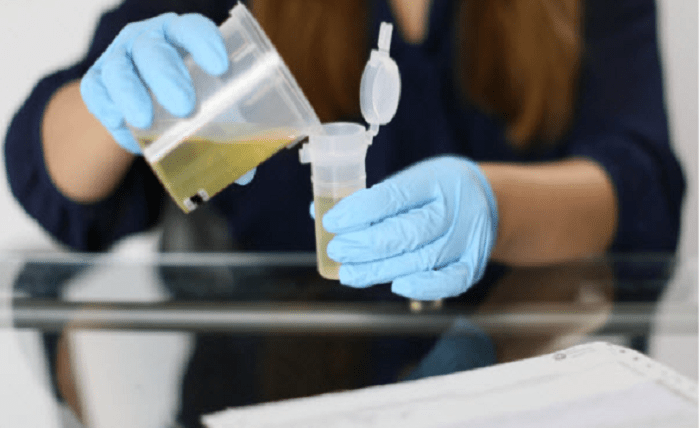Drug testing is now commonplace in various sectors, driven by concerns about safety, productivity, and adherence to ethical standards. This widespread practice has fueled the demand for reliable solutions to pass these tests, given the potential consequences of failure, ranging from job loss to legal complications.
Synthetic urine has emerged as a notable alternative for individuals seeking to navigate drug tests successfully. This laboratory-created substitute mimics the composition of real urine, presenting a controversial yet increasingly popular method to achieve clean test results. This discussion explores the prevalence of drug testing, the necessity for trustworthy solutions, and the role of synthetic urine in meeting this demand.
The need for reliable solutions is driven by various factors, such as the consequences of failing a drug test, which can include job loss, legal ramifications, and damage to personal and professional reputations. As a result, individuals are exploring alternative methods to ensure a clean test result, leading to the emergence of various products and techniques designed to deceive drug screenings.
Comparative Analysis of Synthetic Urine Tests
In-depth examination of leading synthetic urine tests available in the market:
In this analysis, we will conduct a thorough examination of prominent synthetic urine tests currently available in the market. This includes a detailed look at their composition, manufacturing processes, and any unique features that set them apart from competitors. By understanding the specifics of each product, we aim to provide a comprehensive overview of the synthetic urine options consumers have at their disposal.
Evaluation of product effectiveness in passing various drug tests:
Effectiveness is a crucial factor in assessing the viability of synthetic urine tests. We will evaluate each product’s success rate in passing different types of drug tests, including urine analysis for common substances. Factors such as accuracy, reliability, and the ability to mimic natural urine will be scrutinised to gauge the overall performance of each synthetic urine test.
Comparison of features, pricing, and availability for each synthetic urine test:
To aid consumers in making informed decisions, we will compare the features, pricing structures, and availability of the synthetic urine tests under review. This includes considerations such as shelf life, ease of use, and any additional components that contribute to the overall value of each product. By presenting a side-by-side comparison, individuals seeking synthetic urine solutions can better understand the options available and choose a product that aligns with their specific needs and preferences.
Legal Considerations and Risks of Synthetic Urine Use:
Examination of the legal landscape surrounding the use of synthetic urine:
This section will delve into the legal aspects of synthetic urine, exploring the regulations and laws governing its use. It will cover federal and state perspectives, addressing the legality of possessing, selling, or using synthetic urine for the purpose of passing drug tests. Understanding the legal landscape is essential for users to make informed decisions and be aware of potential consequences.
Discussion of compliance with regulations and standards:
To provide a comprehensive overview, we will discuss the compliance of synthetic urine with established regulations and industry standards. This includes examining whether these products meet the criteria set by drug testing protocols and exploring any instances where the use of synthetic urine may violate ethical or legal standards. Evaluating compliance ensures a nuanced understanding of the ethical considerations associated with synthetic urine.
Navigating potential legal challenges and risks associated with synthetic urine use:
This segment will address potential legal challenges and risks that users may face when employing synthetic urine. It will explore scenarios such as workplace consequences, legal actions, and the impact on personal and professional standing. By identifying and understanding these risks, individuals can make informed decisions about whether to use synthetic urine and consider alternative approaches to drug testing compliance.
Comparative Analysis of Synthetic Urine Tests
In-depth comparison of different synthetic urine tests available in the market:
This section will conduct a comprehensive examination of leading synthetic urine tests, providing insights into their composition, manufacturing processes, and distinctive features. By comparing the specifics of each product, readers will gain a thorough understanding of the options available in the market and the unique characteristics that set each synthetic urine test apart.
Evaluation of test effectiveness in passing various drug tests:
The effectiveness of synthetic urine tests in passing different types of drug tests will be thoroughly assessed. This includes an analysis of their success rates in urinalysis and other common drug screening methods. Factors such as accuracy, reliability, and the ability to mimic natural urine will be considered to gauge the overall performance of each synthetic urine test.
Comparison of pricing, availability, and ease of use for each test:
This segment will compare the practical aspects of synthetic urine tests, including pricing, availability, and ease of use. Readers will gain insights into the cost-effectiveness of each product, its accessibility in the market, and the simplicity of the testing process. By presenting a side-by-side comparison of these factors, individuals can make informed decisions based on their budget, convenience, and overall preferences.
Future Trends in Synthetic Urine Testing
In the future, synthetic urine testing is poised to undergo notable advancements. First, we can anticipate the development of more intricate formulations that emulate natural urine with unprecedented accuracy. These formulations may encompass a broader spectrum of organic compounds, additives, and stabilisers to enhance the realism of synthetic urine. Such advancements aim to outpace evolving detection methods, pushing the boundaries of what constitutes a reliable substitute for genuine urine. As technology progresses, the line between authentic and synthetic urine may blur, prompting a constant cat-and-mouse game between those engineering these products and those responsible for drug testing.
Additionally, the future of synthetic urine testing will likely witness a shift towards more sophisticated detection technologies. Emerging methods may involve the integration of cutting-edge analytical tools, such as advanced mass spectrometry or artificial intelligence algorithms, to scrutinise urine samples at a molecular level. This heightened precision in detection could potentially render traditional synthetic urine products obsolete, compelling developers to continuously innovate to stay ahead of evolving testing methodologies.
Conclusion
In conclusion, the comprehensive examination of various synthetic urine tests for drug tests underscores the complexity and evolving nature of this field. The comparative analysis has shed light on the unique features, effectiveness, and practical aspects of each product, aiding individuals in making informed decisions. As the landscape of drug testing and synthetic urine continues to evolve, ongoing advancements and legal considerations emphasise the importance of staying abreast of the latest developments. The pursuit of reliable solutions in this arena requires a nuanced understanding of the diverse products available, considering not only their immediate efficacy but also their long-term viability within the context of changing regulations and emerging technologies.



